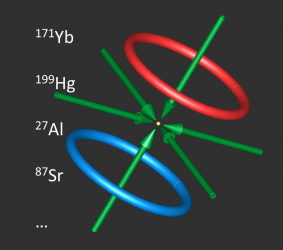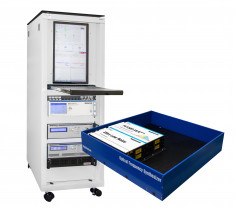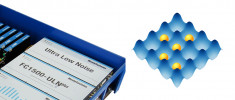Optical clocks

An optical atomic clock employs a clock transition in the optical or visual regime, typically between 400 and 1000 nm wavelength. Such electromagnetic oscillations are multi-THz, in contrast to the present standard cesium clocks that are based on a hyperfine transition at 9192631770 Hz. Because of the much higher oscillatory frequency, nowadays optical clocks are outrunning the accuracy of cesium clocks by several orders of magnitude.
Learn more about optical clocks in our film "Why you need an optical clock".

Your direct line to our expert: Dr. Benjamin Sprenger
Webinars
More information is available in our webinars:
Frequency-Comb-Enabled Quantum 2.0 Applications
Application News
A new record in optical clock stability
Record accuracy in optical clock networks
Webinars
More information is available in our webinars:
Why would I need an optical frequency comb?
Frequency comb based laser systems for optical clock and quantum technology applications
Application Notes
- iQLOC: Ion Quantum Logic Optical Clock
- Using an Atomic Nucleus for Precise Time Measurement
- TECHNICAL ARTICLE: Ultrastable, ultraprecise, portable: How commercial ultrastable laser systems enable high-end optical clock applications
- SCIENTIFIC PUBLICATION: Real-time phase tracking for wide-band optical frequency measurements at the 20th decimal place
- SCIENTIFIC PUBLICATION: Demonstration of 4.8 × 10E−17 stability at 1 s for two independent optical clocks
- SCIENTIFIC PUBLICATION: Space-borne frequency comb metrology
- SCIENTIFIC PUBLICATION: 20 Years and 20 Decimal Digits: A Journey With Optical Frequency Combs





